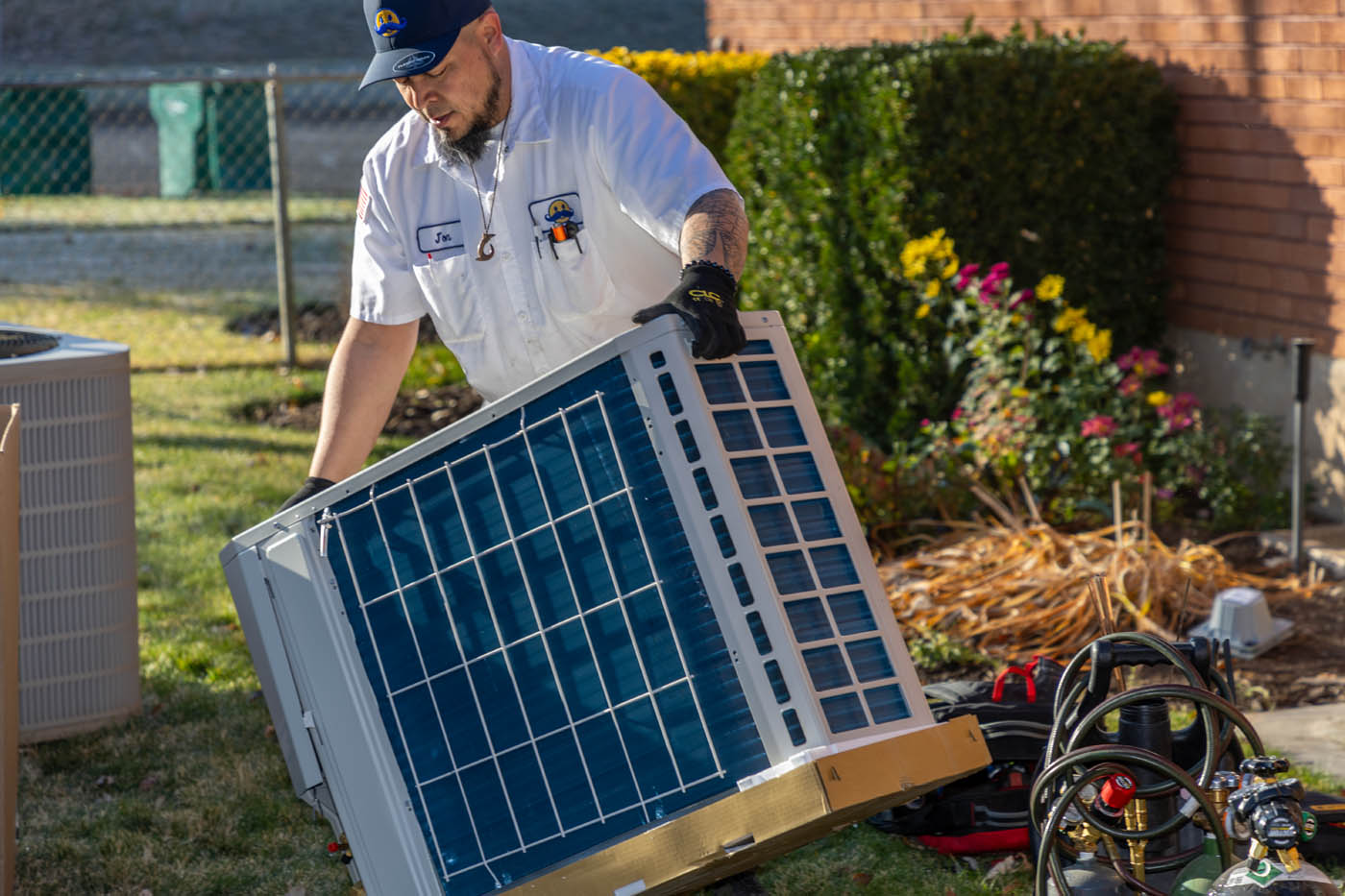New HVAC System Installation Process
An HVAC system, which stands for heating, ventilation, and air conditioning, regulates the temperature, airflow, and air quality in a building. Properly installed, a new HVAC system helps your living or working space remain comfortable and energy-efficient year-round.
Our process for installing a new HVAC system includes several key steps:
-
Initial Assessment and Consultation: We begin with a detailed evaluation to determine the placement of your heating and cooling units and discuss your energy efficiency and air quality needs.
-
Preparation and Planning: We select the right size and type of HVAC equipment for your space, handle permit acquisition, and coordinate any needed work with electricians and plumbers.
-
Installation: Our certified installers set up your heating and cooling components and ductwork before certifying everything is properly set up and integrated.
-
Testing: After installation, we test the system to ensure it operates correctly. We’ll make the necessary adjustments for peak performance if any issues are found.
-
Cleanup and Finalization: We clean up the installation area and guide you on maintaining and operating your new HVAC system.
This streamlined process ensures effective installation from start to finish, focused on your specific requirements.
Helping You Choose The Right HVAC System
5-star HVAC Products For Exceptional Service
Several types of HVAC systems are available, each with unique features and benefits. Our product selection includes high-quality HVAC systems designed to deliver reliable performance.
-
Split Systems: These are the most traditional HVAC systems, consisting of both indoor and outdoor units. The indoor unit contains the furnace or air handler, while the outdoor unit contains the condenser and compressor.
-
Packaged Systems: In these systems, all components are housed in a single unit, typically located outdoors. Packaged systems are commonly used in areas with limited indoor space, such as apartments or commercial buildings.
-
Heat Pumps: Heat pump systems provide heating and cooling by transferring heat between indoor and outdoor air. They are energy-efficient alternatives to traditional heating and cooling systems and are often used in moderate climates.
-
Ductless Mini-Split Systems: These systems consist of individual indoor units mounted on walls or ceilings in each room connected to an outdoor unit. They offer flexible zoning and are ideal for heating and cooling specific areas of a home without ductwork.
-
Geothermal Heat Pumps: Also known as ground-source heat pumps, these systems use the earth's stable temperature to provide heating and cooling. While they offer significant energy savings, they also require underground installation of piping or loops.
-
Hybrid Systems: Hybrid HVAC systems combine the benefits of a heat pump with a gas furnace to optimize energy efficiency. They automatically switch between electric and gas heating based on outdoor temperatures and energy costs.


